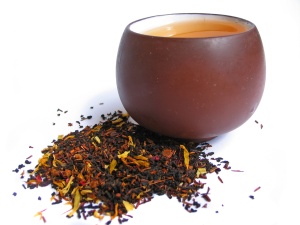This post was featured on Passionate and Creative Homemaking. Don’t forget to stop by their page and show some love!
The amazing health benefits of tea are well-known with more research being done each year. Searching through the wide variety of available flavors in my local supermarket it dawned on me that the majority of the teas we buy can easily be made at home! Growing your own ingredients are a fun healthy way to know exactly what it is you are consuming and I imagine fresh made teas keep much more of their nutrients than their mass-produced counterparts.
Tea gardens can produce a number of crops each year, offer a fun teaching environment for kids and attract the attentions of butterflies and pollen spreading bees! Many commercially produced teas are made with easy to grow plants that you can harvest from your own backyard or indoor planter. Let’s get started!
Mint – Mint is commonly used to treat stomach aches. During the middle ages it was used to whiten teeth and is a strong diuretic and is sometime used as a decongestant for mild common colds. I recommend growing mint in a container because it spreads quickly and will take over your entire garden if you allow. Mint plants grow well in moist partially sunny areas and due to their hardiness I would recommend them to even a novice gardener.
Chamomile – Chamomile is used for sore stomachs, irritable bowel syndrome, and as a mild sleep aide. Its grows well in sandy well-drained soil with lots of sun. Plants should be 15 -30 cm apart and lightly fertilized.
Lemon grass – The grass is considered a diuretic, tonic, and stimulant. For best growth, Cymbopogon citratus requires anything between bright sunlight and light shade and a damp soil having excellent drainage system. When the plants are grown in tubs or containers, it is essential to divide them occasionally as the Cymbopogon citratus is known to have a belligerent growth.
Ginger – Ginger tea is a beverage in many countries, made from ginger root. In China, the tea is made by boiling peeled and sliced ginger to which brown sugar is often added. Sliced orange or lemon fruit may also be added to give a flavour. It is often used to treat nausea and morning sickness. Ginger plants like a cool, sheltered place protected from strong winds and ideally a humid climate but they do grow well in cool climates as well. Soil should be rich and well-drained.
Brewing the Tea
- Use 1 tablespoon fresh leaves/roots or 1 teaspoon dried you can adjust to suit your tastes.
- I recommend using a steeping cup to contain the loose ingredients.
- Pour hot — but not boiling — water in the mug and let steep for five minutes or less. Use sweetener and cream as desired.Note: Make sure you know the identity of the plant you’re using to make tea, and be watchful for allergic reactions. Finally, don’t use any leaves or flowers that have been treated with pesticides. Do your research!
You are now on your way to enjoying a fresh cup of homegrown herbal tea! Do you have a favorite blend?
Related articles
- Mama Tea’s Herbal Blends For Moms-To-Be – Calgary tea | Examiner.com (mamateablog.com)
- DIY Spa Treatment: Ginger-Mint Body Scrub (bellasugar.com)
- New Education about Tea Drinking and Health from the Sharon Kleyne Hour Power of Water (prweb.com)
- The Beauty Benefits of Chamomile (foodstaycation.com)

